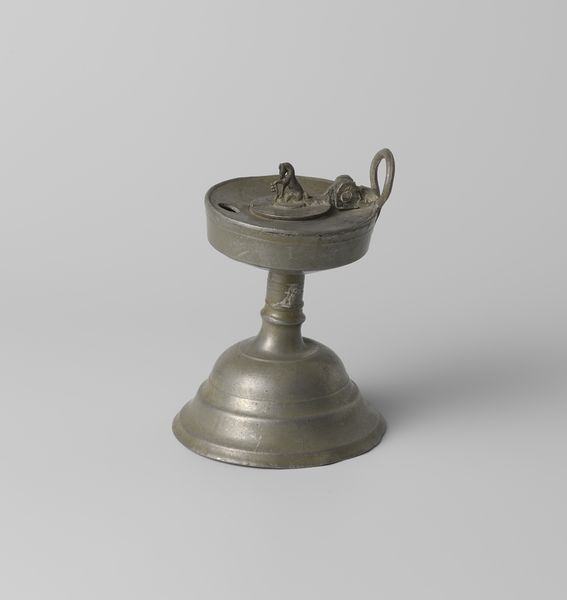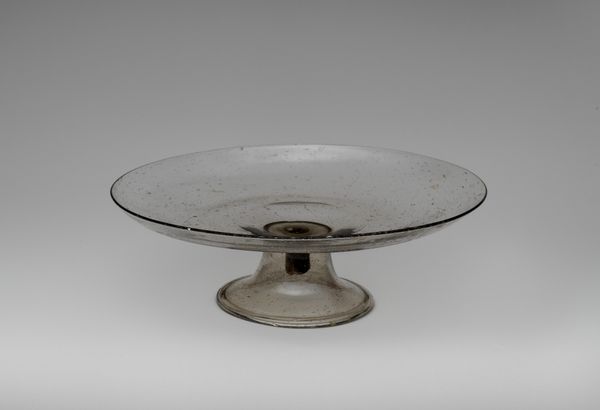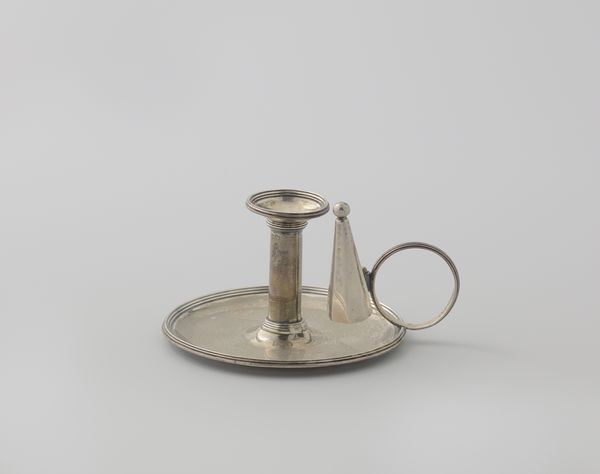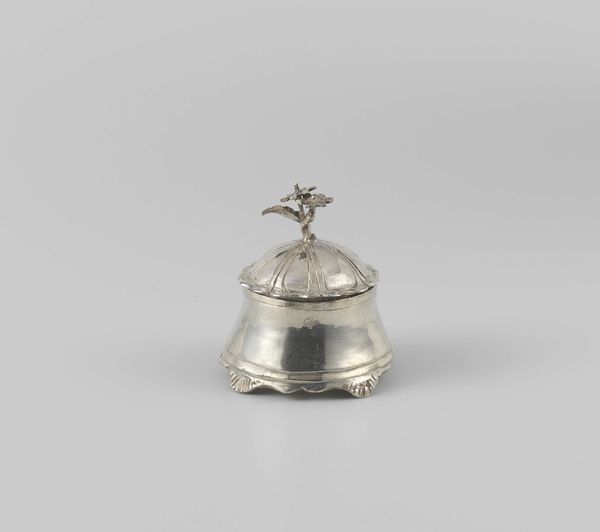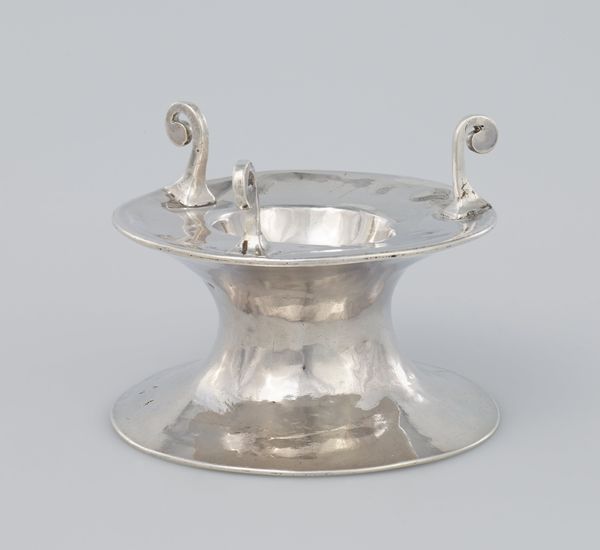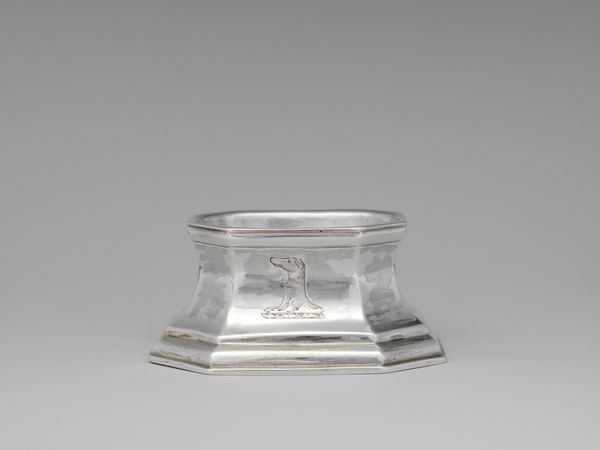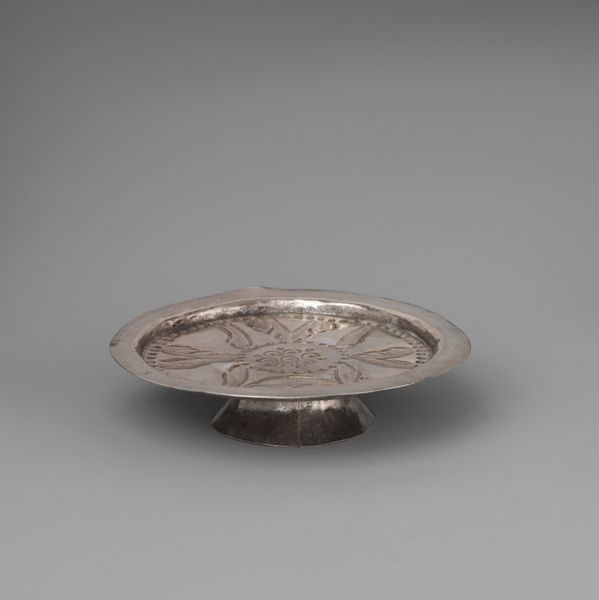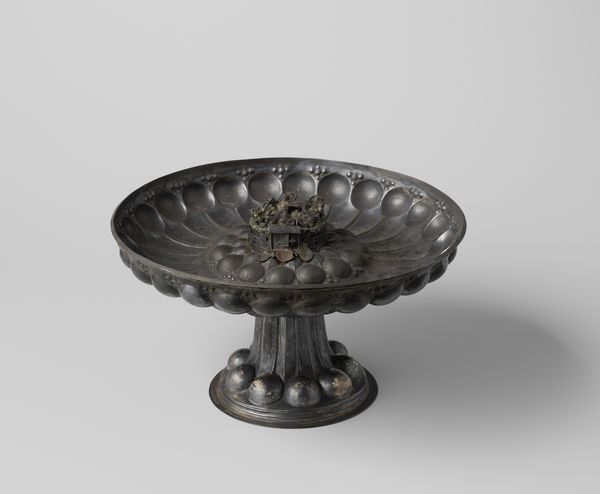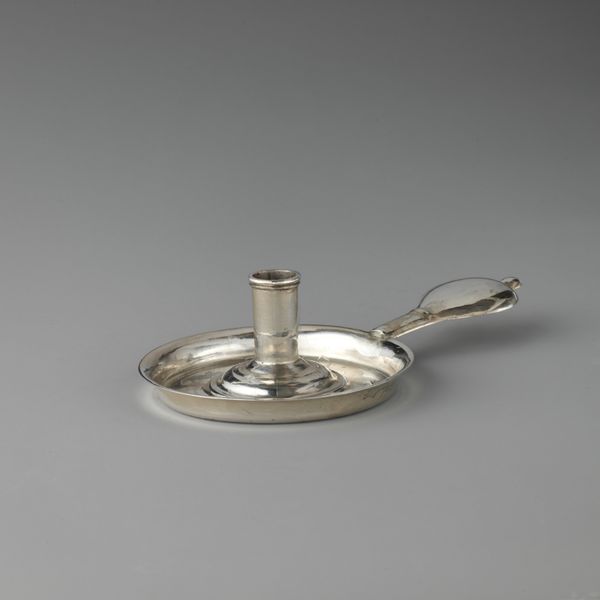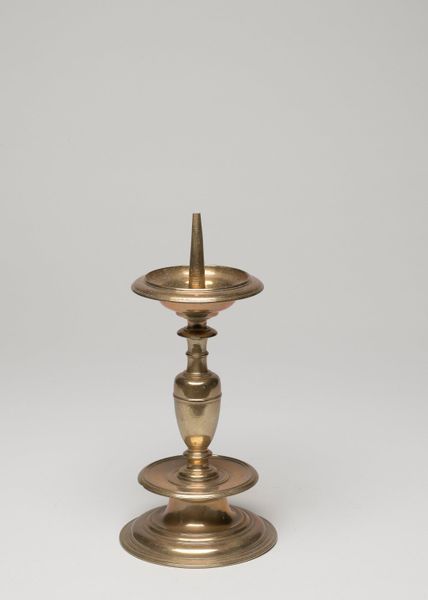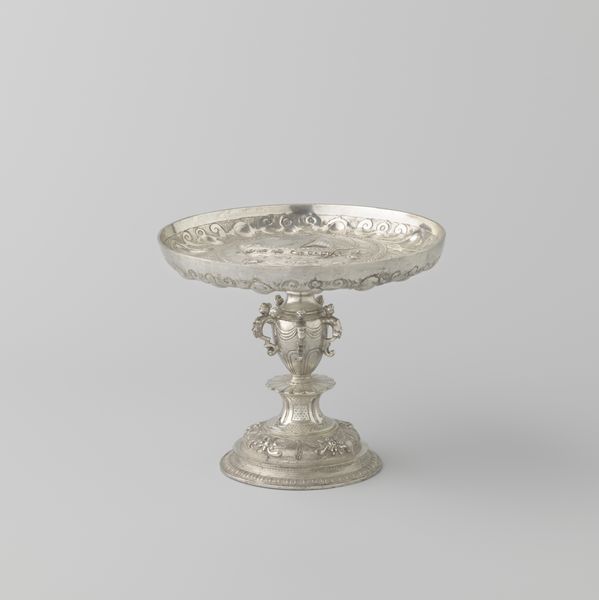
silver, sculpture
#
silver
#
sculpture
#
decorative-art
Dimensions: 1 × 2 1/2 in. (2.5 × 6.4 cm)
Copyright: Public Domain
Editor: This diminutive silver tazza, crafted sometime between 1823 and 1833, feels almost doll-sized. It's so perfectly formed! It makes me wonder, what purpose would such a miniature piece serve, and what does it reveal about the culture it comes from? Curator: An excellent question! These miniature objects reflect the 19th-century fascination with collecting and display, particularly among the burgeoning middle class. Consider how owning such a delicate silver piece spoke to status and aspirations. Editor: So, it's less about functionality and more about signaling wealth or taste? Was this perhaps part of a larger display? Curator: Precisely. Silver, of course, historically signifies wealth, but the size adds another layer. It suggests a playful appreciation of artistry, meant to be admired in a domestic setting. Think of how display cabinets became increasingly popular during this period. These objects populated those spaces, becoming points of conversation and reflections of one's worldliness. This would be showcased inside homes of those able to afford them, as a show of delicate and unique decor. Editor: That’s fascinating. Did the rising industrial era contribute to these consumer desires and possibilities? Curator: Absolutely. Increased production and access to goods fueled a desire for distinctive possessions. The decorative arts, like this tazza, became crucial markers of individuality within a changing social landscape. Consider how museums themselves were also forming, shaping the public's understanding of taste and history. Editor: I see, it's all connected. So much is revealed when we think about its social and economic context! Curator: Indeed. Examining the tazza this way offers insights far beyond its apparent function. We begin to understand it as a signifier within a complex network of social meanings. Editor: I never would have guessed a little cup could hold so much meaning! Curator: That is why contextual investigation of pieces and time spent in museums like the Met can unlock so many things.
Comments
No comments
Be the first to comment and join the conversation on the ultimate creative platform.

